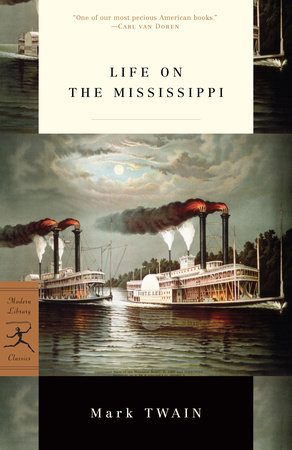Life on the Mississippi

Fashioned from the same experiences that would inspire the masterpiece Huckleberry Finn, Life on the Mississippi is Mark Twain’s most brilliant and most personal nonfiction work. It is at once an affectionate evocation of the vital river life in the steamboat era and a melancholy reminiscence of its passing after the Civil War, a priceless collection of humorous anecdotes and folktales, and a unique glimpse into Twain’s life before he began to write.
Written in a prose style that has been hailed as among the greatest in English literature, Life on the Mississippi established Twain as not only the most popular humorist of his time but also America’s most profound chronicler of the human comedy.
MARK TWAIN, considered one of the greatest writers in American literature, was born Samuel Clemens in Florida, Missouri, in 1835, and died in Redding, Connecticut in 1910. As a young child, he moved with his family to Hannibal, Missouri, on the banks of the Mississippi River, a setting that inspired his two best-known novels, The Adventures of Tom Sawyer and Adventures of Huckleberry Finn. In his person and in his pursuits, he was a man of extraordinary contrasts. Although he left school at 12 when his father died, he was eventually awarded honorary degrees from Yale University, the University of Missouri, and Oxford University. His career encompassed such varied occupations as printer, Mississippi riverboat pilot, journalist, travel writer, and publisher. He made fortunes from his writing…













